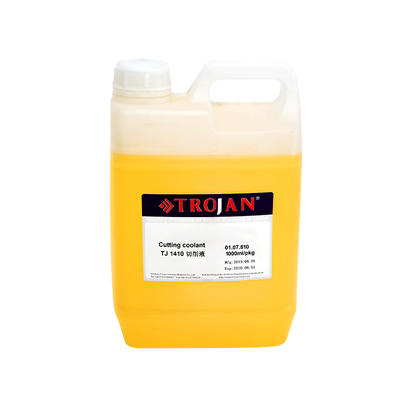In the metal processing industry, surface heat treatment is a commonly used process. Through carburizing, nitriding and other methods, the hardness and wear resistance of the workpiece surface can be significantly improved, thereby extending the service life of the workpiece. For workpieces that have undergone surface heat treatment, the hardness of their surface hardened layer is a key indicator for evaluating their performance. As a precision hardness testing instrument, the Rockwell hardness tester can accurately measure the hardness of the surface hardened layer without destroying the hardened layer structure, providing strong support for the optimization of the heat treatment process.
The surface hardened layer is a thin layer with high hardness and wear resistance formed after the workpiece has undergone surface heat treatment. This hardened layer is essential for improving the wear resistance, fatigue resistance and corrosion resistance of the workpiece. However, the hardness measurement of the hardened layer faces a series of challenges. On the one hand, the hardened layer is usually thin, and the thickness may be only a few microns to tens of microns, which requires the hardness testing instrument to have sufficient accuracy and resolution; on the other hand, the hardened layer structure is fragile and easily destroyed during the test process, so the test method must ensure non-destructive or micro-destructive.
The Rockwell hardness tester is a hardness testing instrument based on the depth method. It uses an indenter of a specific shape and material (such as a diamond cone indenter) to press into the surface of the sample under a specified test force, and then measures the residual depth of the indentation to assess the hardness. The characteristics of the Rockwell hardness tester are its small indentation, wide measurement range, and simple and quick operation.
Small indentation: The test force used by the Rockwell hardness tester is relatively small, so the indentation produced is also small. This is particularly important for measuring the thin and fragile structure of the surface hardened layer, which can minimize the damage to the hardened layer.
Wide measurement range: The Rockwell hardness tester can adapt to various samples of different hardness and thickness by replacing different scales and indenters, including metals, plastics, ceramics and other materials.
Easy and fast operation: The operation process of the Rockwell hardness tester is simple and fast, and data can be obtained immediately, which improves production efficiency. It is particularly suitable for finished product inspection in mass production.
For workpieces that have undergone surface heat treatment, the Rockwell hardness tester can accurately measure the hardness of its surface hardened layer without destroying the hardened layer structure. This is mainly due to the following advantages of Rockwell hardness tester:
Micro-destructive or non-destructive testing: Since the indentation produced by Rockwell hardness tester is small, the impact on the hardened layer is minimal, which can be considered as non-destructive or micro-destructive testing. This ensures the accuracy of the measurement results and does not cause additional damage to the workpiece.
High-precision measurement: Rockwell hardness tester has high-precision measurement capability and can accurately reflect the hardness change of the hardened layer. This is of great significance for evaluating the effect of heat treatment process, optimizing process parameters and controlling product quality.
Strong adaptability: Rockwell hardness tester can adapt to workpieces of different shapes and sizes, whether flat or curved, and can perform accurate hardness measurement. This makes Rockwell hardness tester have a wide range of application prospects in the hardness measurement of surface hardened layer.
Rockwell hardness tester plays an important role in the optimization of heat treatment process. By accurately measuring the hardness of the surface hardened layer, the effect of the heat treatment process can be evaluated and the basis for the adjustment of process parameters can be provided. For example, in the carburizing process, the depth and uniformity of the carburized layer can be determined by measuring the hardness of the hardened layer, thereby optimizing parameters such as carburizing temperature, time and carbon potential. In the nitriding process, the Rockwell hardness tester can also be used to evaluate the hardness and thickness of the nitriding layer, providing strong support for the optimization of the nitriding process.
The Rockwell hardness tester can also be used for quality control and finished product inspection in the production process. By regularly measuring the hardness of the hardened layer of the workpiece, problems in the production process can be discovered in time and measures can be taken to correct them, ensuring stable and reliable product quality.
When selecting and using the Rockwell hardness tester, the following points should be noted:
Choose a suitable ruler and indenter: Select a suitable combination of ruler and indenter according to the type and hardness range of the test material to ensure the accuracy and reliability of the measurement results.
Ensure a stable test environment: During the test, avoid the influence of external factors such as wind and vibration on the test results to ensure the stability of the test environment.
Regular calibration and maintenance: The Rockwell hardness tester needs to be calibrated and maintained regularly to ensure its measurement accuracy and long-term stability.
The Rockwell hardness tester plays an important role in the measurement of surface hardness with its small indentation, wide measurement range, simple and quick operation, etc. By accurately measuring the hardness of the hardened layer, the Rockwell hardness tester provides strong support for the optimization of the heat treatment process and helps to improve the performance and service life of the workpiece. In the future development, the Rockwell hardness tester will continue to play its advantages and contribute more to the metal processing industry.

 中文简体
中文简体 英语
英语 西班牙语
西班牙语 德语
德语



















